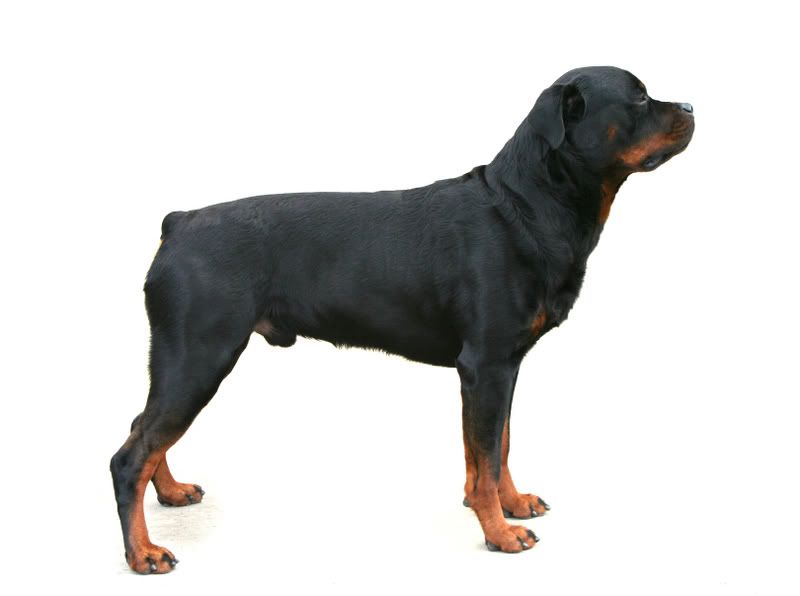|
|
Location: Co. Durham, UK
Joined: Jan 2005
Posts: 11,213
|
17-11-2007, 12:06 AM
Points of the Dog?
Right I need help here! I'm trying my best to understand breed standards and what certain breeds should look like according to the standard, but there are two points I'm really struggling with - hock and pasterns!So could someone give me an idea of what, say, strong flexible pasterns would look like and what well let down hocks look like, what I need to look for and perhaps pics of those that don't fit the above etc. Other pics of your own breed in this area and the particular part of the standard would help a lot too!
Thanx again people!

|
|
|
Location: central scotland
Joined: May 2007
Posts: 4,637
|
17-11-2007, 01:02 AM
Nero, nice square profile, nice pasterns and a proud stance.

Caesar, the same, but you'll notice they've got different body styles, Caesar has a slightly longer body.

All too often in the rottie breed their legs are too short, the breed standard is body length to height 9/10 in other words from chest to rump and paws to withers should be nearly the same, hope I've expained it clearly.

|
|
|
Location: central scotland
Joined: May 2007
Posts: 4,637
|
|
|
Location: Somerset
Joined: Sep 2005
Posts: 615
|
17-11-2007, 07:39 AM
Please forgive me if I'm stating the obvious but in the past I've been surprised how many people don't know that dogs have front AND rear pasterns. The hock is the joint above the rear pastern, the rear pastern is the bit between the hock joint and the floor.
The difference between the two needs to be understood when thinking about faults like cow or sickle hocks, for instance.
Just thought that needed to be pointed out.
Debs

|
|
|
Location: UK
Joined: Apr 2006
Posts: 1,558
|
17-11-2007, 09:07 AM
Right I need help here! I'm trying my best to understand breed standards and what certain breeds should look like according to the standard, but there are two points I'm really struggling with - hock and pasterns! 
So could someone give me an idea of what, say, strong flexible pasterns would look like and what well let down hocks look like, what I need to look for and perhaps pics of those that don't fit the above etc. Other pics of your own breed in this area and the particular part of the standard would help a lot too!
Thanx again people!
So could someone give me an idea of what, say, strong flexible pasterns would look like and what well let down hocks look like, what I need to look for and perhaps pics of those that don't fit the above etc. Other pics of your own breed in this area and the particular part of the standard would help a lot too!
Thanx again people!
Firstly, got to agree with Debs. Many people do confuse the rear pastern with hocks. I've seen many critiques which incorrectly state "nice short hocks" .... and I probably wrote it myself 20 years ago
The angle of the front pastern is dependent on bone construction and soft tissue. The angle, and so flexibilty of the pastern, does usually follow the general construction of the dog. Eg you wouldn't expect a well angled pastern on a breed with an upright front with forward placed upper arm like the Fox Terriers. These types of breeds tend also to have upright pasterns.
Breeds which have more accentuated angulation all round, like the Rottweiler and German Shepherd, also tend to have more sloping pasterns. Over angulation and so also weak pasterns are faults that often occur in the GSD.
A front pastern that is strong and flexible is not upright but has a slight but not excessive angle.

|
 |
«
Previous Thread
|
Next Thread
»
| Currently Active Users Viewing This Thread: 1 (0 members and 1 guests) | |
|
|








